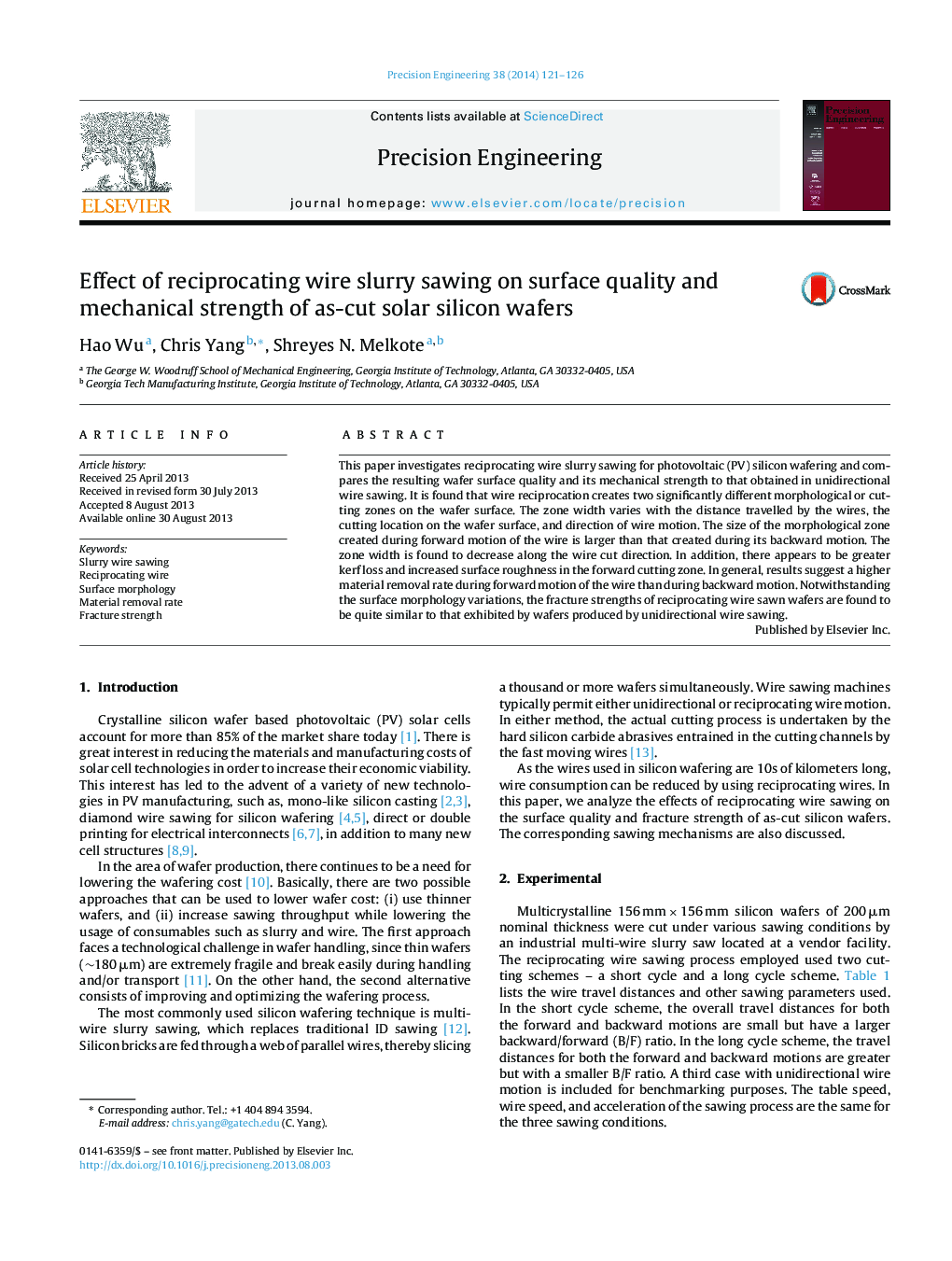| Article ID | Journal | Published Year | Pages | File Type |
|---|---|---|---|---|
| 806606 | Precision Engineering | 2014 | 6 Pages |
•Reciprocating wire slurry sawing for PV silicon wafering studied.•Wire reciprocation creates two significantly different morphological or cutting zones.•The cutting zone widths vary with the distance travelled by the wires, wire motion direction and wafer location.•These variations indicate a higher cutting rate during the forward motion than during the backward motion.•Fracture strengths of reciprocating wire sawn wafers are quite similar to unidirectional wire sawn wafers.
This paper investigates reciprocating wire slurry sawing for photovoltaic (PV) silicon wafering and compares the resulting wafer surface quality and its mechanical strength to that obtained in unidirectional wire sawing. It is found that wire reciprocation creates two significantly different morphological or cutting zones on the wafer surface. The zone width varies with the distance travelled by the wires, the cutting location on the wafer surface, and direction of wire motion. The size of the morphological zone created during forward motion of the wire is larger than that created during its backward motion. The zone width is found to decrease along the wire cut direction. In addition, there appears to be greater kerf loss and increased surface roughness in the forward cutting zone. In general, results suggest a higher material removal rate during forward motion of the wire than during backward motion. Notwithstanding the surface morphology variations, the fracture strengths of reciprocating wire sawn wafers are found to be quite similar to that exhibited by wafers produced by unidirectional wire sawing.
